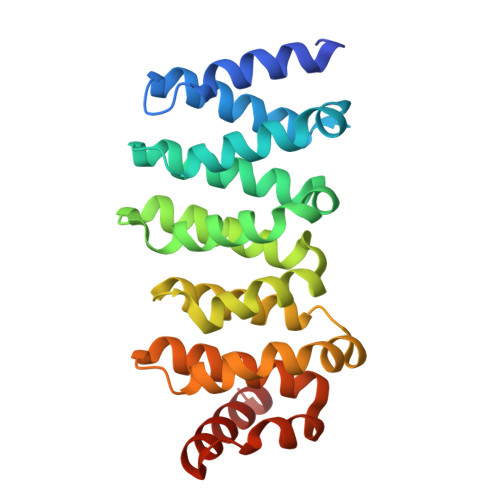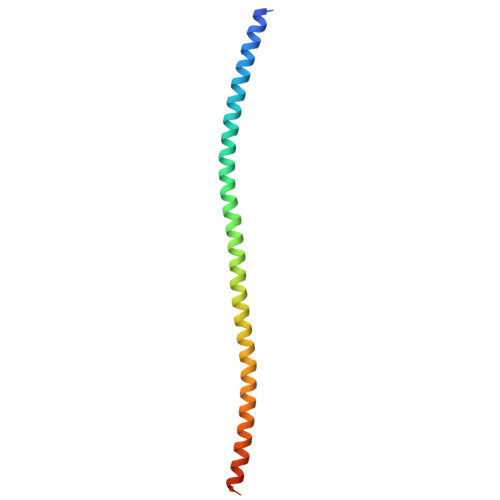CLASP-mediated competitive binding in protein condensates directs microtubule growth.
Jia, X., Lin, L., Guo, S., Zhou, L., Jin, G., Dong, J., Xiao, J., Xie, X., Li, Y., He, S., Wei, Z., Yu, C.(2024) Nat Commun 15: 6509-6509
- PubMed: 39095354
- DOI: https://doi.org/10.1038/s41467-024-50863-3
- Primary Citation of Related Structures:
8WHH, 8WHI, 8WHJ, 8WHK, 8WHL, 8WHM - PubMed Abstract:
Microtubule organization in cells relies on targeting mechanisms. Cytoplasmic linker proteins (CLIPs) and CLIP-associated proteins (CLASPs) are key regulators of microtubule organization, yet the underlying mechanisms remain elusive. Here, we reveal that the C-terminal domain of CLASP2 interacts with a common motif found in several CLASP-binding proteins. This interaction drives the dynamic localization of CLASP2 to distinct cellular compartments, where CLASP2 accumulates in protein condensates at the cell cortex or the microtubule plus end. These condensates physically contact each other via CLASP2-mediated competitive binding, determining cortical microtubule targeting. The phosphorylation of CLASP2 modulates the dynamics of the condensate-condensate interaction and spatiotemporally navigates microtubule growth. Moreover, we identify additional CLASP-interacting proteins that are involved in condensate contacts in a CLASP2-dependent manner, uncovering a general mechanism governing microtubule targeting. Our findings not only unveil a tunable multiphase system regulating microtubule organization, but also offer general mechanistic insights into intricate protein-protein interactions at the mesoscale level.
Organizational Affiliation:
Shenzhen Key Laboratory of Biomolecular Assembling and Regulation, Shenzhen, Guangdong, 518055, China.





















